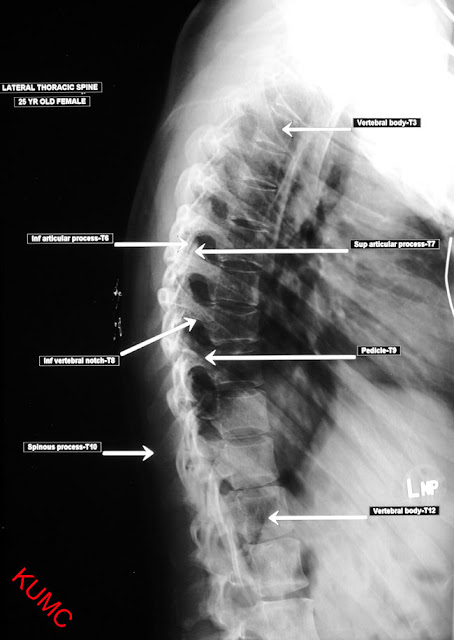Thoracic AP positioning
The patient lies supine on the table midline aligned to the midline of the table, the ASISs and the acromio clavicular joints are equidistant from the table ensuring the midsaggital plane is at 90 degrees to the table. The neck is extended to avoid superimposition of the mandible on the upper thoracic spine, flexion of the hips and knees may help reduce the thoracic curve.
|
X-Ray Of AP thoracic
Video of AP Thoracic Radiography Positioning
Thoracic lateral positioning
•Position : Lateral
recumbent
•No rotation of patient.
•Mid coronal to centre of table.
•Place a lead sheet at
the back of the patient.
•Expiration phase or
long timing (sec).
•CR : perpendicular T7
at midcoronal line (8cm below the
jugular notch)
Evaluation of the Image
X-Ray Of Lateral thoracic
Video of LateralThoracic Radiography Positioning
|







No comments:
Post a Comment